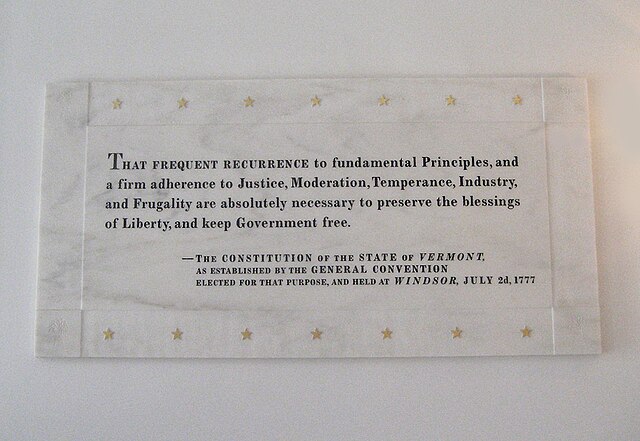The Constitution of the State of Vermont is the fundamental body of law of the U.S. state of Vermont, describing and framing its government. It was adopted in 1793 following Vermont's admission to the Union in 1791 and is largely based upon the 1777 Constitution of the Vermont Republic which was drafted at Windsor in the Old Constitution House and amended in 1786. At 8,295 words, it is the shortest U.S. state constitution. Largely unchanged since 1777, Vermont's Constitution is the only active constitutional document to have been drafted and ratified outside of the United States.
Marble tablet with a passage from the Constitution of Vermont in the Hall of Inscriptions at the Vermont State House.
The government of Vermont is a republican form of government modeled after the Government of the United States. The Constitution of Vermont is the supreme law of the state, followed by the Vermont Statutes. This is roughly analogous to the Federal United States Constitution, United States Code and Code of Federal Regulations respectively. Provision is made for the following frame of government under the Constitution of the State of Vermont: the executive branch, the legislative branch, and the judicial branch. All members of the executive and legislative branch serve two-year terms including the governor and senators. There are no term limits for any office.
Vermont State House
Governor Phil Scott (R)
Secretary of State Sarah Copeland-Hanzas (D)
Attorney General Charity Clark (D)





